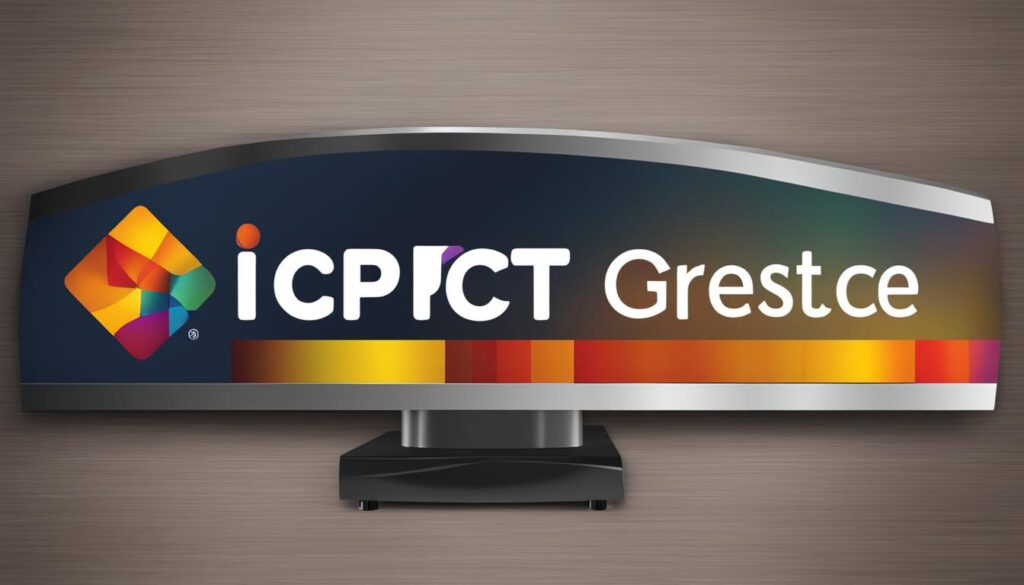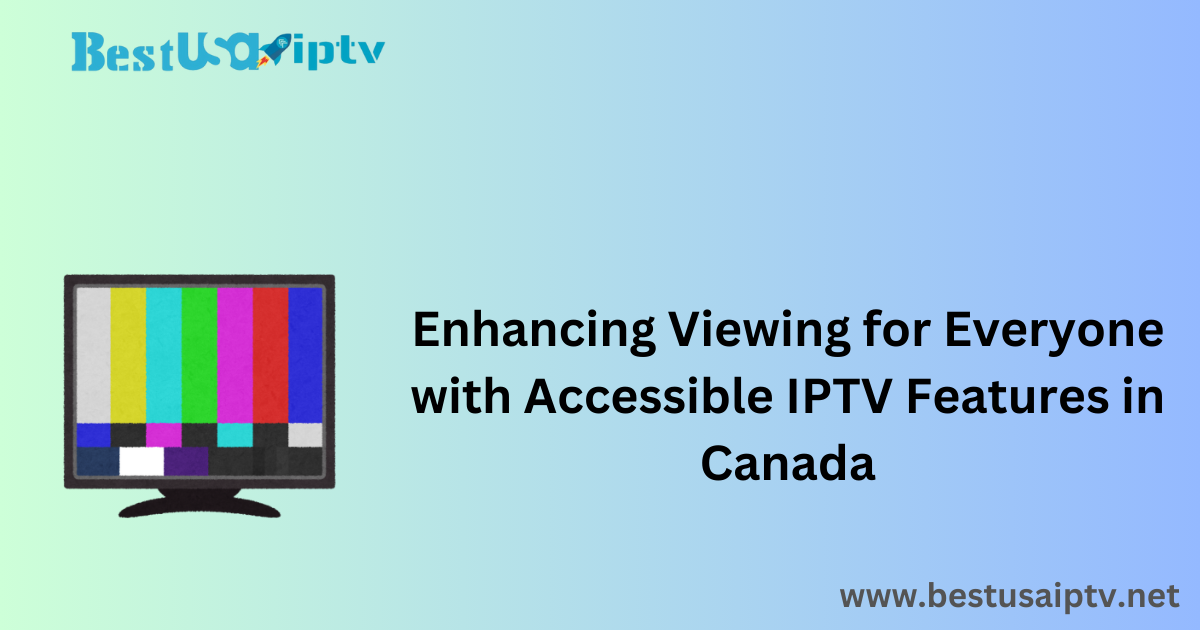The landscape of television consumption in Canada is undergoing a profound transformation, driven by the advent of Internet Protocol Television (IPTV). This technological evolution is not only reshaping the way audiences access their favorite programs but is also fostering a more inclusive viewing experience that caters to the diverse needs of Canadian viewers. IPTV accessibility features in Canada are now a focal point in the industry’s progression, ensuring that television content is universally accessible and barrier-free.
Recognizing the importance of accessibility in media, Canadian IPTV service providers are increasingly prioritizing features that enhance usability for all individuals. From captioning and audio descriptions to user-friendly navigation tools, these providers are committed to fostering an inclusive entertainment ecosystem.
Key Takeaways
- The shift to IPTV in Canada places a strong emphasis on accessibility, catering to diverse audience needs.
- Advanced accessibility features, such as subtitles and audio descriptions, are becoming standard in IPTV services.
- The integration of inclusive technology empowers all individuals to enjoy an equitable television experience.
- Canadian IPTV providers adhere to legal and ethical standards, ensuring accessible content and equitable contributions.
- As digital engagement continues to expand, inclusive viewing experiences are integral to a fully participatory society.
Understanding IPTV and Its Adoption in Canada
The integration of IPTV into Canadian households has revolutionized traditional television consumption. This transformation is supported by the convergence of high-speed internet with innovative broadcasting technologies. Below is an exploration of IPTV, Canada’s transition from cable to internet-driven TV, and the pivotal role of major telecom companies in this shift.

What Is IPTV?
IPTV is a digital television service that transmits media content over internet protocols rather than traditional cable or satellite. It offers enhanced viewing options, including high-definition (HD) and ultra-high-definition (4K) resolutions, interactive programming guides, and cloud-based personal video recording (PVR) services, enriching the user experience.
The Transition from Traditional Cable to IPTV in Canada
The shift from conventional cable television to IPTV has been a gradual yet deliberate evolution, driven by consumer demand for more flexible and high-quality viewing options. This transition enables Canadians to access personalized, interactive, and high-resolution content, facilitated by the widespread availability of high-speed internet services.
The Role of Major Canadian Telecoms in IPTV’s Rise
Leading telecommunications companies such as Bell, Telus, and SaskTel have spearheaded IPTV’s expansion in Canada. These providers have integrated IPTV into their service portfolios, offering bundled packages that combine high-speed internet with premium television content. This seamless integration enhances user experience and solidifies IPTV’s position as the future of television broadcasting.
IPTV Accessibility Features in Canada
As technology advances, Canada remains committed to fostering an inclusive media environment. IPTV providers are integrating comprehensive accessibility features, ensuring equitable entertainment experiences for individuals with disabilities.
Audio Description Services
Significant progress has been made in incorporating audio descriptions within IPTV services. These descriptions provide auditory narration of on-screen events, enabling visually impaired viewers to fully engage with televised content. This feature is instrumental in bridging accessibility gaps and enhancing storytelling immersion.
Accessible Remote Controls
The design of remote controls and user interfaces has evolved to accommodate diverse user needs. Modern remotes feature tactile buttons for individuals with limited motor skills and voice-activated commands for hands-free navigation, reinforcing the commitment to accessibility in IPTV services.
Subtitles and Closed Captions
Subtitles and closed captions play a crucial role in making television accessible to the deaf and hard-of-hearing community. IPTV providers ensure that subtitles accurately convey dialogue and essential non-verbal sounds, offering a comprehensive auditory experience through text.
As IPTV technology continues to evolve, it is imperative that accessibility features advance in tandem. These innovations uphold the inclusive principles that define the IPTV landscape in Canada.
The Legal Landscape of IPTV in Canada
The rise of IPTV has introduced new legal considerations, primarily concerning regulatory compliance and content licensing. The Canadian Radio-television and Telecommunications Commission (CRTC) governs IPTV services, distinguishing between legally licensed providers and unauthorized operators.
Legal vs. Grey Market IPTV Services
Legal IPTV services operate under CRTC licensing, ensuring compliance with broadcasting regulations. Conversely, grey market services, which offer unlicensed content at reduced prices, pose legal and security risks. Consumers engaging with unauthorized providers may face service disruptions and potential legal ramifications.
The CRTC’s Role in Regulation and Enforcement
The CRTC plays a vital role in maintaining a fair and competitive IPTV market. By enforcing regulatory standards, the agency safeguards consumer interests and ensures the integrity of licensed IPTV services. Compliance with these regulations fosters a secure and ethically responsible media landscape.
IPTV Providers: Expanding Beyond Major Telecoms

While major telecom companies dominate the IPTV market, independent providers such as TekSavvy, oxio, and Distributel offer competitive alternatives. These providers deliver high-quality television services with cost-effective pricing structures, catering to consumers seeking greater flexibility.
Comparison of Independent IPTV Providers
| Provider | Starting Monthly Rate | Basic Package Highlights |
|---|---|---|
| TekSavvy | $20 | Local and national channels |
| oxio | $25 | Customizable channel lineup |
| Distributel | $30 | Specialty and network channels |
Independent IPTV providers emphasize customer-centric services, allowing subscribers to tailor their viewing packages according to their preferences. This expansion of choices underscores the growing demand for diverse television options in Canada.
Cost-Effective IPTV Options
Independent IPTV providers offer cost-effective solutions that rival traditional cable services. By combining affordability with customizable channel selections, these providers cater to budget-conscious consumers without compromising on content quality.
Key Benefits of Independent IPTV Services
- Affordable Pricing: Subscription plans start at $20 per month, making IPTV a viable alternative to traditional cable.
- Personalized Packages: Subscribers can select channels tailored to their interests.
- Additional Features: Cloud PVR functionality enhances content accessibility and convenience.
These benefits underscore the transformative impact of independent IPTV services, making quality entertainment more accessible to Canadian audiences.
Technological Innovations in IPTV
IPTV providers are continuously enhancing their services with state-of-the-art technological advancements.
4K Resolution and High-Definition Content
The adoption of 4K resolution significantly enhances picture quality, offering viewers an immersive and visually superior experience. IPTV services in Canada are increasingly incorporating 4K capabilities, elevating home entertainment standards.
Cloud-Based PVR and Interactive Guides
Cloud-based PVR solutions allow users to record and access content on-demand without external hardware. Interactive program guides further simplify content navigation, improving user engagement and overall accessibility.
User-Friendly IPTV: Access and Ease of Use
IPTV providers prioritize user-friendly interfaces and accessibility features to enhance the viewing experience for all users.
Accessible Remote Controls and Interface Design
Modern IPTV remote controls are designed with accessibility in mind, incorporating tactile buttons and voice recognition technology to accommodate users with varying needs. These enhancements contribute to a more intuitive and inclusive television experience.
Conclusion
The evolution of IPTV in Canada represents a significant advancement in television broadcasting. With a strong emphasis on accessibility, affordability, and technological innovation, IPTV services are redefining media consumption. By prioritizing inclusive features, regulatory compliance, and consumer choice, Canada’s IPTV landscape continues to progress toward a more equitable and engaging future for all viewers.
Navigating IPTV’s Features with Ease

Effective navigation is fundamental to an optimal user experience in any technology, and IPTV is no exception. Canadian IPTV providers are enhancing accessibility by integrating advanced features such as voice control and user-friendly menu options, ensuring that users can locate their desired content effortlessly. This emphasis on seamless IPTV navigation is not merely about convenience—it reflects a commitment to inclusivity and technological innovation.
The following table highlights the practical features offered by leading Canadian IPTV providers, demonstrating their efforts to create a more accessible and intuitive user interface:
| IPTV Provider | Accessible Remote Control Features | Interface Navigation Aids |
|---|---|---|
| Bell | Speech-enabled remote, tactile buttons | Interactive guide with large fonts, easy search functionality |
| Telus | Backlit remote, voice command support | User-friendly menus, customizable interface options |
| Rogers | Voice-controlled remote, ergonomic design | Smart search tool, personalized recommendations |
As illustrated, providers such as Bell, Telus, and Rogers are actively delivering user-centric IPTV experiences. Their focus on ease of use ensures that IPTV remains accessible to a diverse audience while reinforcing Canada’s position as a leader in IPTV innovation.
Unlocking Premium IPTV with Subtitle and Audio Description Features
To accommodate diverse viewer needs, Canadian IPTV services are incorporating accessibility features such as subtitles and audio descriptions. These features are crucial for audiences with sensory impairments, ensuring that everyone can engage with a broad spectrum of content.
Subtitles enhance the viewing experience for the deaf and hard-of-hearing community by transcribing speech and non-speech elements, capturing the ambiance, and providing context. Similarly, audio descriptions serve as an essential tool for visually impaired viewers, offering detailed narrations of on-screen actions, environments, and expressions.
Rather than being secondary additions, these features are now integral to IPTV offerings. Their incorporation into mainstream services ensures that all viewers, regardless of ability, can enjoy content without barriers. The table below outlines how Canadian IPTV providers enhance accessibility through these features:
| Feature | Description | Impact on Viewers |
| Subtitles | On-screen text conveying speech and sound elements | Enables deaf and hard-of-hearing individuals to fully engage with content |
| Audio Descriptions | Voice-over narration of key visual elements | Provides visually impaired viewers with a richer storytelling experience |
By prioritizing accessibility, Canadian IPTV services are fostering an inclusive entertainment environment that upholds the dignity and independence of all viewers. These initiatives underscore their commitment to innovation and equal access, ensuring that IPTV remains a platform for everyone.
Integrating IPTV into the Smart Home Ecosystem
As technology evolves, IPTV is becoming an integral component of the smart home ecosystem. With its high-definition broadcasts and on-demand services, IPTV is seamlessly integrating with home automation, enhancing the overall viewing experience.
IPTV Compatibility with Smart Devices
The convergence of IPTV and smart home technology is facilitated by its compatibility with a wide range of smart devices. Major platforms such as Apple TV, Fire TV, and Roku have played a pivotal role in this transformation, offering users a seamless and reliable viewing experience. Additionally, IPTV services are increasingly integrating with voice assistants, smart speakers, and even home lighting systems, creating an interconnected entertainment environment.
The Future of IPTV in Smart Entertainment
Looking ahead, IPTV is poised to drive the next generation of smart entertainment. As technologies advance, IPTV will continue to evolve, incorporating machine learning algorithms to refine content recommendations and immersive features such as augmented reality. These developments will further cement IPTV as a cornerstone of intelligent home media solutions.
By staying at the forefront of innovation, IPTV providers are ensuring that users can enjoy a smarter, more personalized viewing experience, seamlessly integrated into their digital lifestyles.
IPTV Alternatives for a Personalized Viewing Experience
In addition to IPTV, Canadian consumers have access to a range of alternative television services, each catering to unique viewing preferences. These options offer flexibility, ensuring that audiences can tailor their entertainment experience to their needs.
Satellite TV, Antennas, and Over-the-Top Services
For those in remote areas or with limited internet connectivity, satellite TV and antenna-based broadcasts remain viable alternatives. Providers such as Bell Satellite TV and Shaw Direct offer nationwide coverage, while antennas provide cost-effective access to local channels.
Meanwhile, Over-the-Top (OTT) services like Netflix and Disney+ have reshaped on-demand entertainment, providing vast content libraries that empower viewers to watch at their convenience.
Combining IPTV with Streaming Services
For consumers seeking comprehensive access to content, combining IPTV with streaming services presents a robust solution. By integrating live IPTV broadcasts with the extensive catalogs of OTT platforms, viewers can curate a truly personalized entertainment hub that balances live and on-demand content.
This convergence of technologies ensures that Canadian audiences have access to an expansive, customized media landscape that aligns with their preferences and viewing habits.
Staying Informed: Avoiding Illegal IPTV and Securing Your Data

As IPTV gains popularity, it is crucial for consumers to be aware of the risks associated with illegal IPTV services and the importance of data security. Illicit IPTV providers often operate outside regulatory frameworks, exposing users to legal and cybersecurity threats.
Risks of Grey Market IPTV Services
Unlicensed IPTV services pose several risks, including:
- Legal Consequences: Users may face fines or litigation for accessing unauthorized broadcasts.
- Cybersecurity Threats: These services often lack security measures, making users vulnerable to malware and data breaches.
- Service Instability: Unreliable connections, frequent outages, and poor streaming quality are common issues.
- Lack of Customer Support: Users of illegal IPTV services may have no recourse for troubleshooting or service disruptions.
Choosing Secure IPTV Options
To ensure a safe and legal IPTV experience, consumers should verify provider credentials and opt for licensed services. Key factors to consider include:
- Compliance with the Canadian Radio-television and Telecommunications Commission (CRTC) regulations.
- Transparent operations and clear service agreements.
- Positive customer reviews and reliable service records.
- Secure payment processing and stringent privacy policies.
The table below highlights trusted, CRTC-compliant IPTV providers:
| IPTV Provider | CRTC Compliance | Privacy & Security Measures |
| Bell | Yes | Secure payment processing, data encryption |
| Rogers | Yes | Privacy protection, reliable customer support |
| Telus | Yes | Transparent operations, comprehensive cybersecurity |
By choosing reputable providers, Canadian consumers can enjoy IPTV services with confidence, knowing they are safeguarded against legal and security risks.
Conclusion
The Canadian IPTV landscape is evolving into a dynamic and sophisticated entertainment platform. With a strong emphasis on accessibility, security, and innovation, IPTV services are shaping the future of digital television.
Key developments such as the integration of accessibility features, smart home compatibility, and personalized content options demonstrate the industry’s commitment to enhancing user experiences. Furthermore, the importance of legality and cybersecurity cannot be overstated, as informed consumers are best positioned to make safe and responsible IPTV choices.
By embracing advancements in technology and prioritizing user-centric services, Canadian IPTV providers continue to set new benchmarks for entertainment, ensuring an immersive, inclusive, and secure viewing experience for all.




